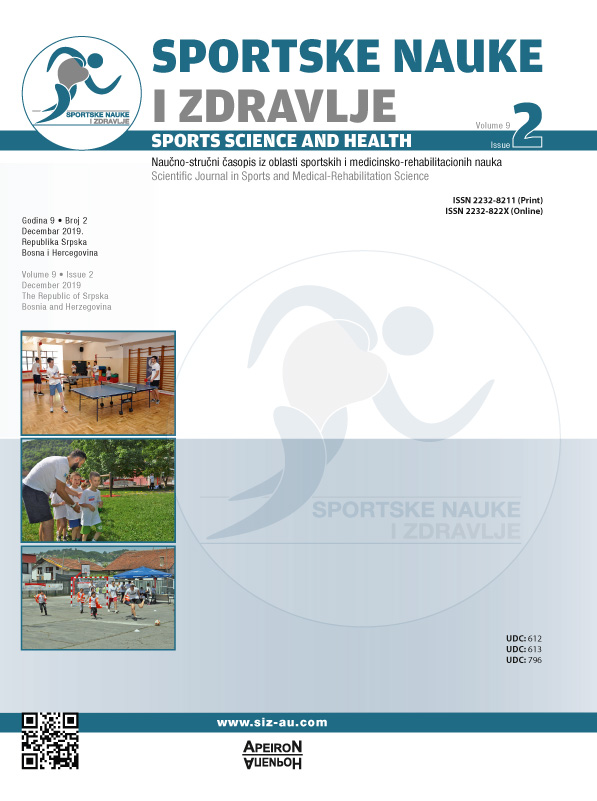Participating in Kinesiology Activities in Primaryeducation Students’ Free Time
DOI:
https://doi.org/10.7251/SSH1902085RAbstract
The objective of the research was to investigate to what extent students of first and second grades of primary school participate in physical activities in their free time. We are living in the age of sedentary lifestyle, which is becoming a problem of public health. 189 respondents took part in this research of which 93 girls and 96 boys aged 7 to 9. To assess the level of students’ activity in their free time, a poll was used consisting of eight questions from the questionnaire “Fels physical activity questionnaire for children” (FPAQ). Based on queries from the questionnaire, indices were calculated from the area of sports (IS), free time (ISV; household chores (IKP) and total physical activity result (UTA). To assess body composition, anthropometric measures of height, mass, BMI and percentage of fat in the body were used. To assess those, we used the device for measuring physical composition– Omron BF500 Body Composition Monitor. Results indicate that 59.26% do not meet daily recommendations for participating in physical activities. As regards the difference in students’ age, it is notable that second grade students are somewhat more physically active. Observing average results, it is clear that students were most physically active in their free time. The lowest values were recorded in the area of sports at school, (1.15), yet lower values were also obtained from sports club activities (2.06). It is evident that students of that age are minimally active during their PE classes and this is a segment where the number of physically active students can be increased. Increasing physical activity at school shall encourage students to participate in physical activity outside educational institutions.Downloads
Published
2020-03-03
Issue
Section
Чланци
